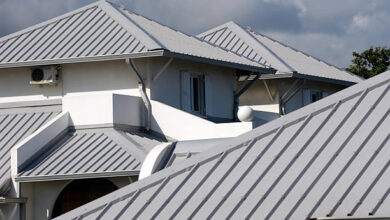How Often to Fertilize Lawn? Everything You Need To Know

How often to fertilize lawn?
The most common times of year for homeowners to fertilize their lawns are in the spring and fall. However, there are also valid reasons why you would want to fertilize your lawn during the summer or winter months.
Soil type
Different types of soil need to be treated differently concerning fertilizer use and application. For example, clay-based soils can hold onto fertilizer runoff while sandy soils runoff into nearby bodies of water when exposed too frequently or improperly.
Type of grass
There’s more than one kind of green growing thing called “lawn,” you know! A larger yard with three different types (fescue, bluegrass, and rye) will require more frequent fertilizing than a smaller yard with only one grass type.
Frequency of use
A home whose residents spend more time walking or playing on the lawn will need to be treated more often than where this occurs less frequently.
Weather
Hot and humid weather can promote weed growth and moss, so you’ll want to treat your lawn with fertilizer in these conditions. On the other hand, overuse of fertilizer can damage existing plant life in any season, so it’s essential to research how much you should use depending on rainfall levels.
The specific schedule for fertilizing your lawn depends upon these variables and others unique to your property, such as tree shade patterns, gardens areas, and steep slopes. To get the best results from your fertilizer investments, learn more about soil testing so you can pinpoint any deficiencies in your lawn’s nutrition before applying anything to it.
What is the best fertilization schedule for lawns?
If you fertilize too little, you won’t give your lawn the nutrients it needs, and your property may turn yellow and brittle. The blades can be burned if you apply fertilizer too early or too late.
Fertilizing your lawn one or two times a year, in the spring and the fall, is usually sufficient for most properties, but it depends on your type. Several people fertilize their lawns four times a year. To avoid causing delays, it would be best to wait for the big holidays to do it: around Easter, Memorial Day, Labor Day, and Halloween.
If you use synthetic fertilizer, you can fertilize up to every four or five weeks, depending on the type of lawn you have. You can space out your organic fertilizer applications for eight to ten weeks when you have a slow-release fertilizer. Do not apply organic fertilizer during peak summer temperatures. Your grass can become damaged by the heat and blazing sun combined with fertilizers.
How to apply fertilizer?
These two factors can determine grass types and the best time to fertilize them.
1. Heat-Season Grasses
Summer is the season when warm-season grasses, which are common in the southern states, grow the most. The types of grass in this category include carpetgrass, zoysiagrass, St. Augustine grass, and Bermudagrass.
If you want to fertilize them, you should do it in late spring, when the grass is green and in total growth. As summer closes in, you can fertilize your lawn again, but avoid it as the fall approaches. The fall is too late in the year to fertilize zoysia grass and other warm-season grasses, so you risk losing the grass to dormancy in the winter.
2. Wet-Season Grasses
In the late spring or early fall, cool-season grasses, such as Kentucky bluegrass, ryegrass, bentgrass, and fescue grass, grow most vigorously. Mow your lawn around the same time you fertilize the grass in the spring when it is actively growing.
You can fertilize the lawn when temperatures are lower in the fall. To avoid stressing cool-season grasses or burning them with chemicals, wait until at least Labor Day to fertilize cool-season grasses.
If the first anticipated frost date is about six weeks away, fertilize the garden no later than that. In the fall, you may break down your lawn by doing it too late.
How to use lawn fertilizer after your first application?
Read More: Each and Everything We Need to Know So Far about Basement Floor Paint
Follow these tips after you apply fertilizer:
Do not use your lawn for at least 24 hours after applying fertilizer. Pets and children should not be allowed on the grass until it is scorched and the fertilizer has been absorbed into the soil.
Do not mow the grass for 48 hours. After fertilizing the lawn, don’t mow it for a few days, as it can remove the fertilizer before the lawn entirely absorbs it.
How to fertilize growing grass?
Fertilizing your lawn at the right time will ensure that it is in an active growth phase. Because of this, it’s essential to determine what type of grass you have. By fertilizing your lawn when growing, you will maximize the growth and supply the necessary nutrients to keep your property healthy and dark green.
What type of fertilizer should you use on your lawn?
There are liquid and granular fertilizers, as well as synthetic and organic options for your lawn.
Fluid
Fast and effective since it can be spread quickly, but it requires a backpack sprayer for large areas. Professionals generally use it.
Granular
The best choice for home gardening since it’s easy to spread.
Synthetic
Synthetic Components release their nutrition fast.
Organic
Organic fertilizers are made of plants and animals and are usually slow-release types. Therefore, the effects are longer-lasting.
What is the best way to apply lawn fertilizer?
Here are some tips for fertilizing your lawn:
Do it two days before
Make sure your lawn is thoroughly watered and allowed to dry about 48 hours before you plan to fertilize. You shouldn’t fertilize over wet grass, and you shouldn’t fertilize if you expect heavy rain in the next two days.
Choose a suitable spreader
These are the most common types of spreaders for gardening at home.
Rotary: Best used when you have a large area to fertilize.
Dragging: Best used when you need to apply fertilizer in a controlled manner.
Handheld: These small spreaders are ideal for a tiny backyard or if the fertilizing area needs a different product.
Pour fertilizer into the spreader
From the bag, fill the spreader until you feel comfortable moving it around. The spilled fertilizer can be recovered by laying a tarp on the ground.
Check the lawn for problems
Be sure to cover the entire perimeter of your lawn. Next, pull the spreader in rows across the turf in an orderly fashion. If necessary, overlap the rows a little to ensure a thorough application.
If you are using a drop spreader, make sure the hopper is closed after each pass to prevent fertilizer from leaking out.
Accidents you should cover
Pick up a broom to spread out excess fertilizer if you end up dumping too much on your lawn. It is also good to apply more water to this spot to make sure all the fertilizer gets into the soil and doesn’t burn the blades.
Read More : Deciduous Shrubs: The Perfect Addition to Your Gardening Arsenal
Conclusion
It is best to feed your area at least five to six years. Don’t make any gap between them. Feeding the lawn is very important. The environment and the land type is also a factor. For example, the grasses fertilized in the cold season can be fertilized at the end of spring. But it depends on its type.



